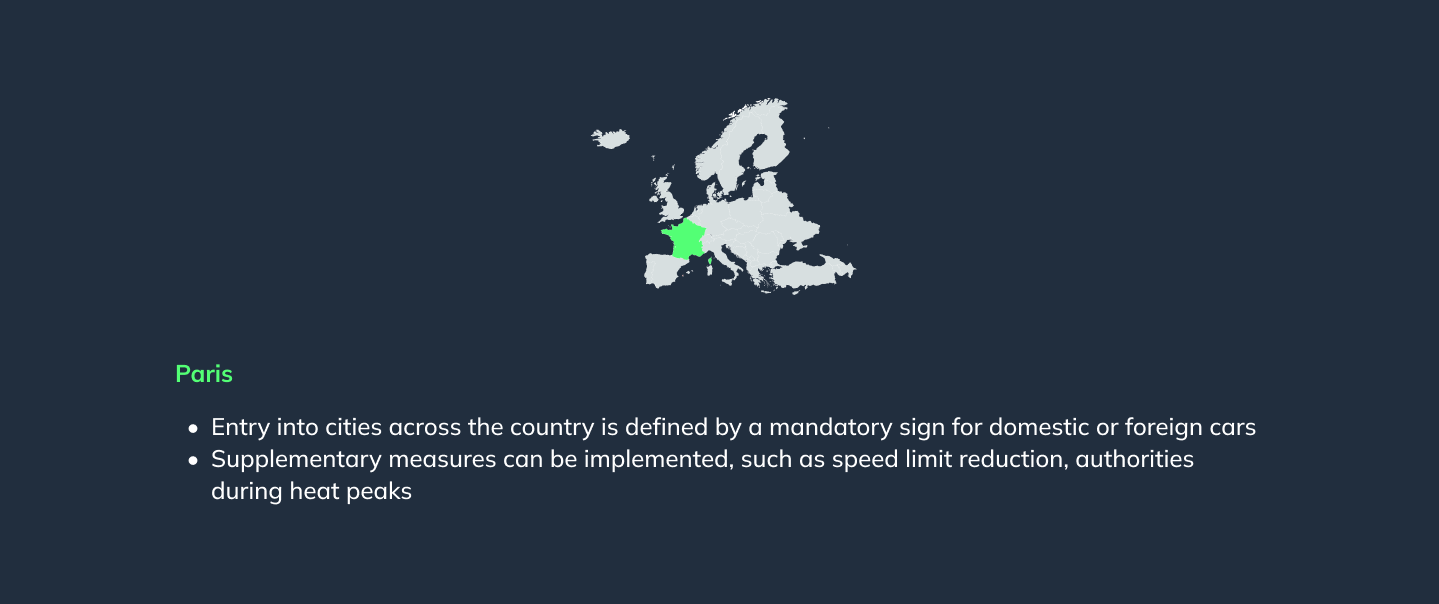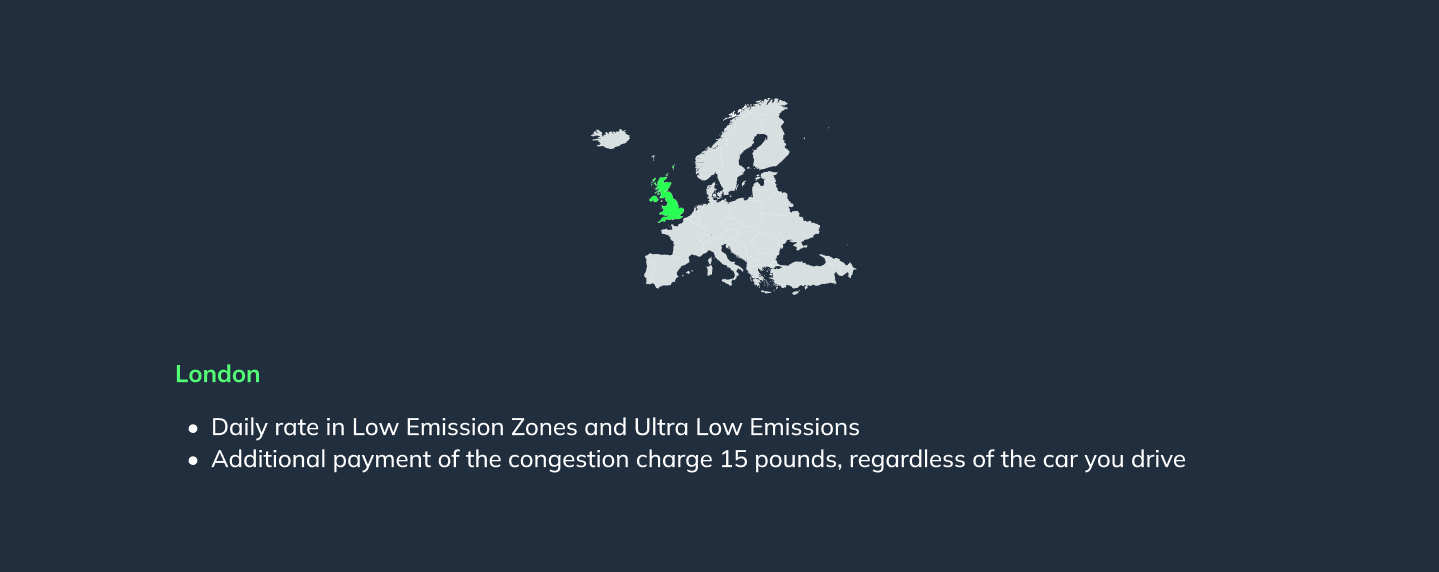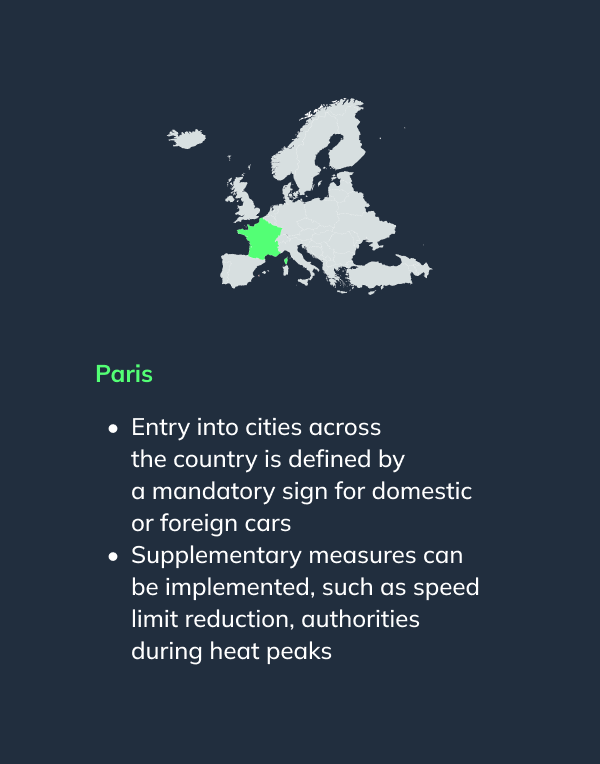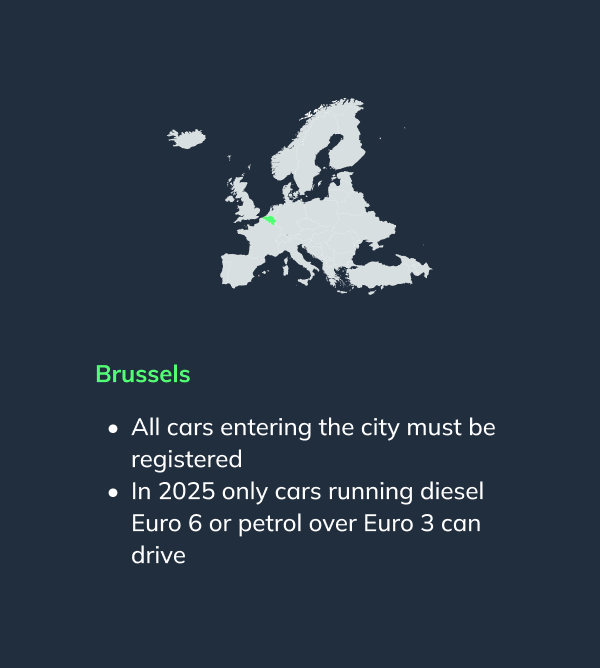The European Union is aiming for carbon neutrality by 2050, and states that it will only meet this goal through the electrification and diversification of transport.
The European Union is targeting a 55% reduction in greenhouse gases (GHGs) by 2030. This means returning to pre-1990 emission levels. This is an essential goal in order to ensure that the overall objective of carbon neutrality by 2050 is met.
Transport`s share of GHG emissions within the European Union is growing. Including aviation, according to Eurostat this sector was responsible for 15% of emissions in 1990 and 25% in 2015. In this sector, there are specific goals to be met and policies to be complied with: by 2030, there must be a 55% reduction in emissions from car journeys (compared to 2021), and a 50% reduction from vans; by 2035, both of these forms of transport will need to have cut 100% of their emissions, which means there will be no internal combustion engine vehicles on the market.
This kind of road transport accounts for 20.4% of emissions, while aviation accounts for 3.8% and shipping 4%.
The first point in favor of the electric vehicle is obvious to any observer: an electric vehicle does not produce exhaust emissions. These vehicles do not produce any gases, such as carbon dioxide, while they are moving. This has the immediate consequence of improved air quality in urban areas, which are affected by gases emitted by vehicles with internal combustion engines. According to the World Health Organization, this type of pollution is responsible for 4.2 million premature deaths every year.
However, it should be noted that the production of an electric car produces 15% more greenhouse gases than the production of a gasoline-powered vehicle. According to the Union of Concerned Scientists, which authored the study, this is mainly due to the lithium batteries.
In addition to the manufacture of vehicles and their batteries, the energy that powers them can also lead to emissions when no electricity from renewable sources is available. According to the European Union, 93% of electric car drivers in Europe have the option of choosing between electricity generated from renewable sources and electricity derived from fossil fuels. In Europe, 58% of the electricity produced is already carbon neutral. EDP, incidentally, has a commitment to produce 100% of its energy from renewable sources by 2030, and to stop using coal entirely by 2025.
EDP is, by the way, committed to producing energy 100% from renewable sources by 2030 and completely leaving the use of coal by 2025.
Where are the emissions from an electric car?
An electric vehicle powered by energy generated from fossil fuels cannot be described as a zero-emissions vehicle. Even so, it emits less GHG than a vehicle with an internal combustion engine. The Transport & Environment NGO has compiled the latest data on the emission of gases from vehicles with internal combustion engines and electric vehicles.
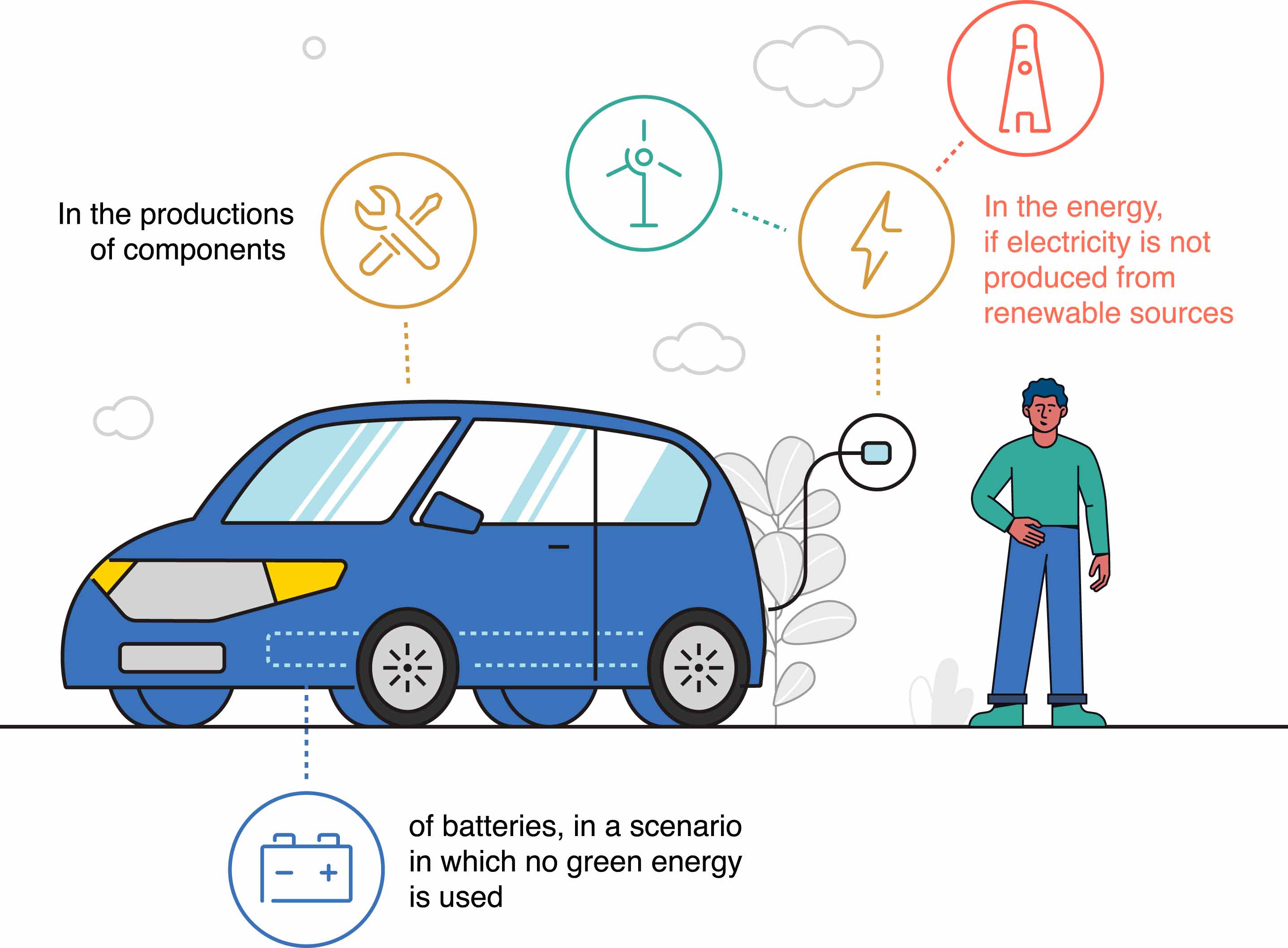
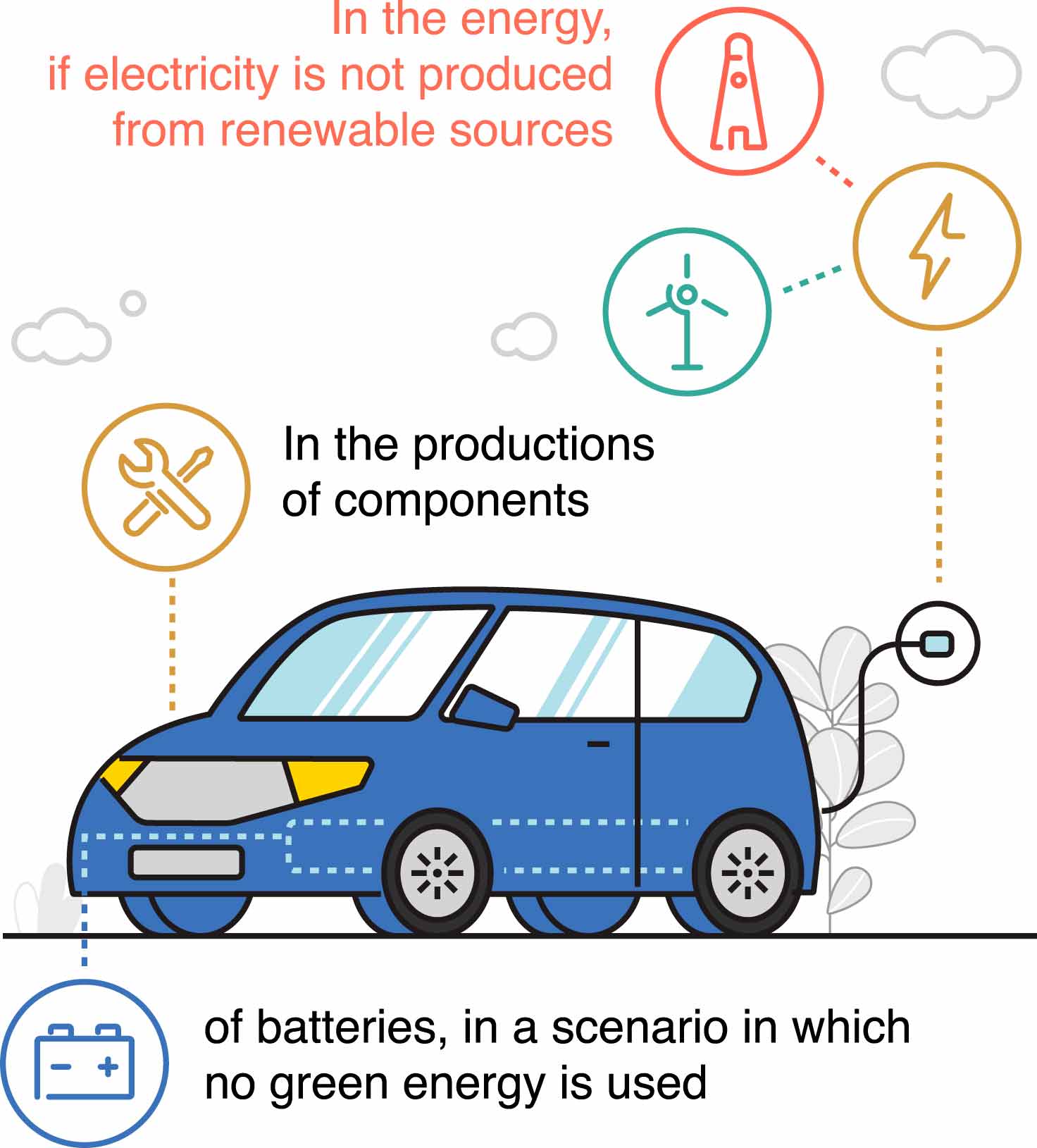
The latter use more gases in their manufacture: for example, in the manufacture of their batteries (in a scenario in which no green energy is used). Nevertheless, an electric vehicle always produces less carbon dioxide during its life cycle than a vehicle powered by an internal combustion engine.
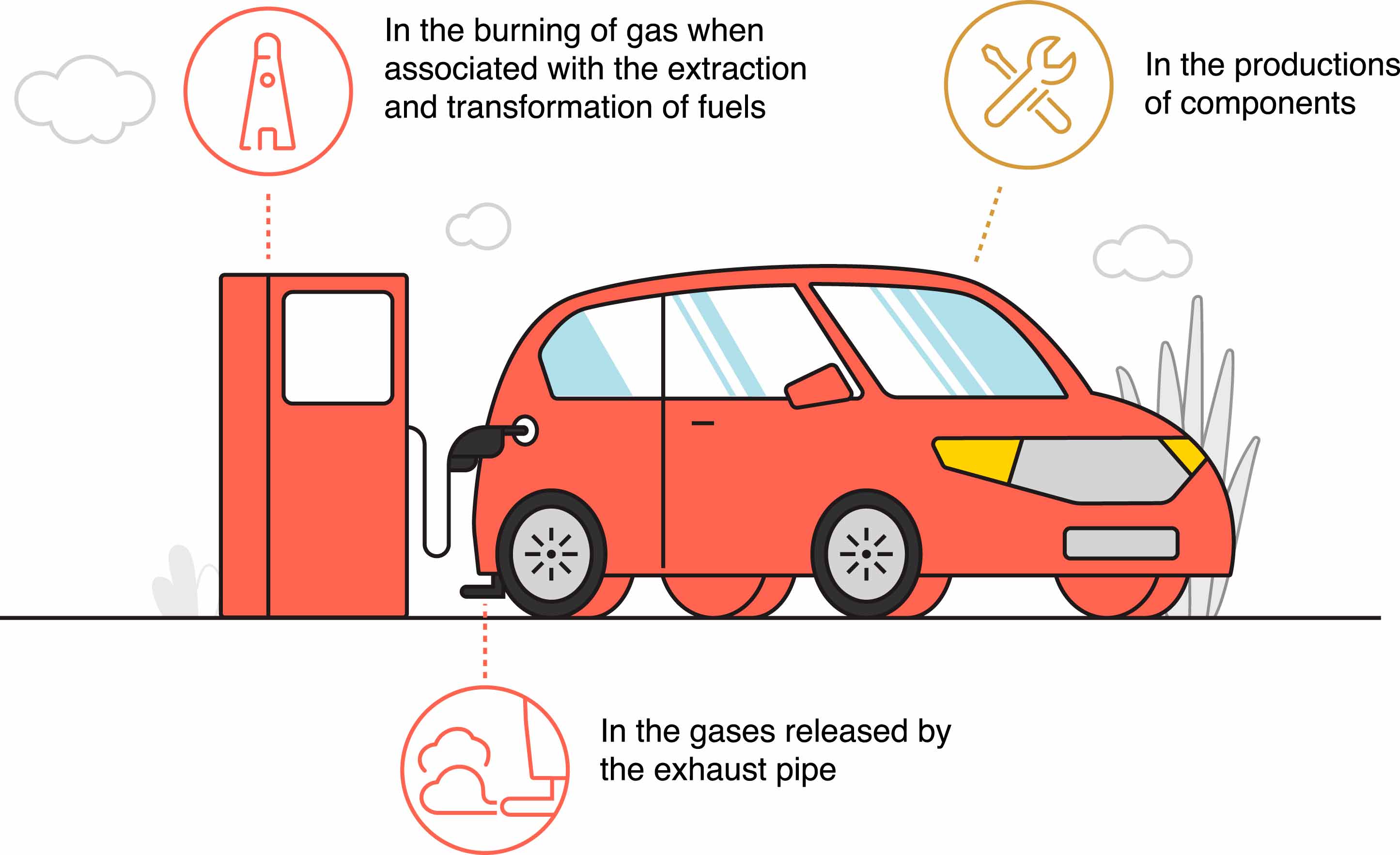
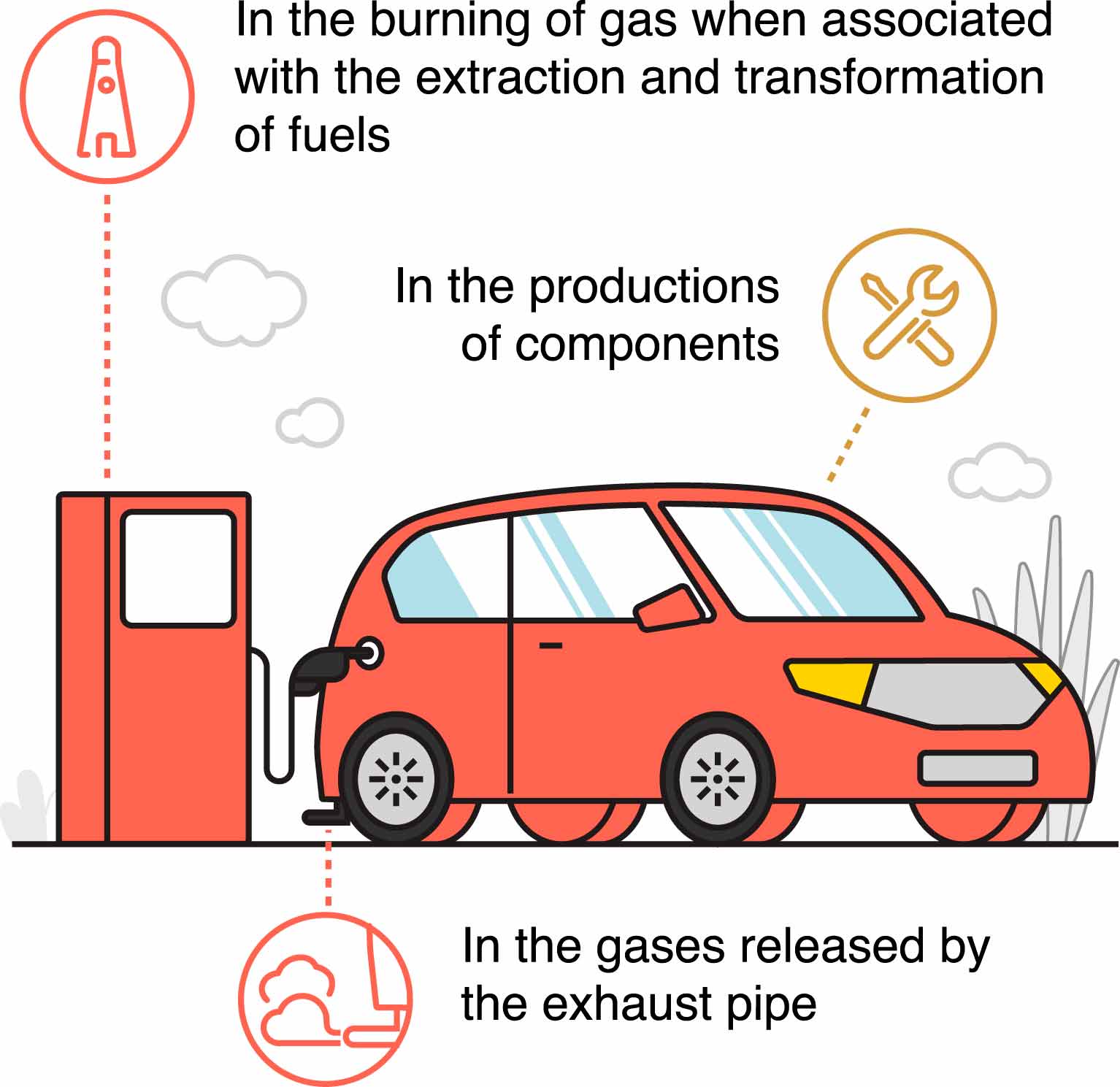
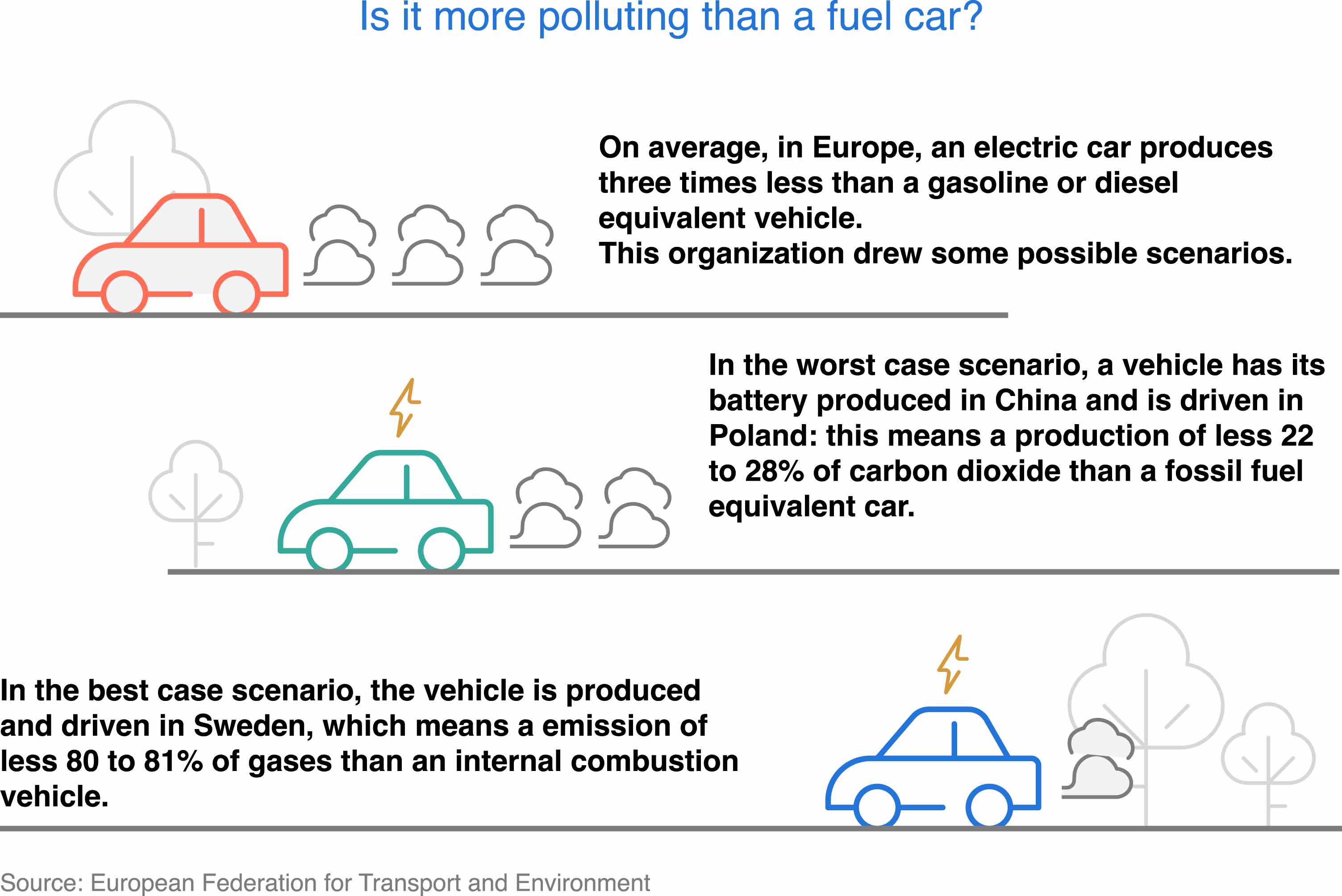
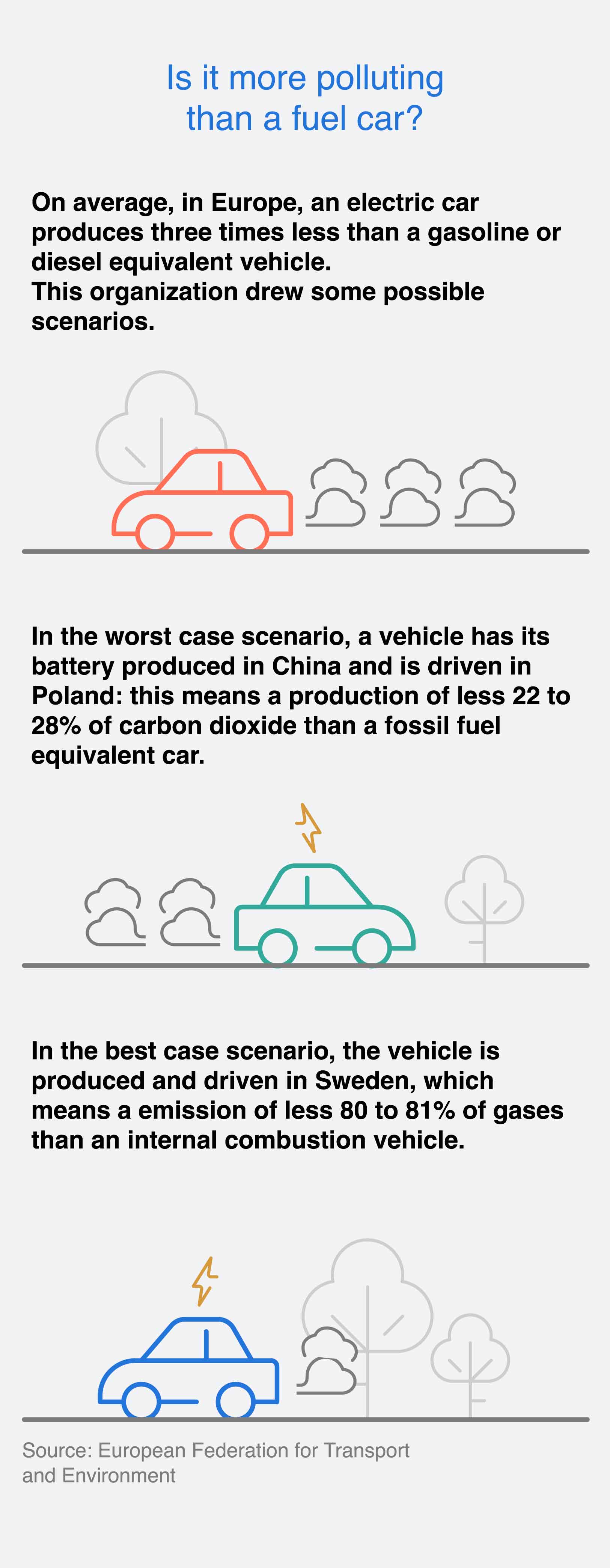
The electric car isn't enough
The European Union's strategy to reduce emissions from motor vehicle traffic is not, however, simply a matter of replacing technologies. It is essential to reduce the number of cars and invest in soft mobility such as bicycles and scooters, whether or not they are electric. The key word is diversification, which results in gains in energy efficiency (since these vehicles consume less than an electric car or van) and space for people in cities. With the change of paradigm, sustainability is sought at various levels, not only the environmental, but also in reducing congestion, noise, road accidents and, consequently, increasing the inclusion of children and the elderly in public spaces.
Right now, the city represents a full-frontal assault on human beings. This permanent assault reaches our ears and is in the pollution in the air. We need more green spaces, wider pavements: a more people-friendly vision of the city, with fewer accidents involving pedestrians, less space taken up by the tons of steel and iron that are cars.
Henrique Sánchez, Founder and President of Electric Vehicle Users Association (EVU)
For the time being, Paris is the best example of this: after having banned any kind of car in many parts of the city, it now has 1,000 km of exclusive or shared cycle routes where the traffic cannot exceed 30 km/h. These infrastructures haveincreased the number of cyclists in the city by 67%.
In Lisbon, the definition of cycle paths or shared lanes has had a similar result. A study by the Instituto Superior Técnicofor the year 2020 shows a 25% increase in the number of cyclists in the city. It also reveals an interesting increase in the number of privately-owned bikes — 8% from 2019 — and a significant increase in the number of electric bikes. Today, 17.5% of the bicycles on Lisbon’s streets are electric (in 2018 they represented only 5%), which proves this kind of mobility is seen as an option for long distances within the city, as part of the daily routine.
The manufacturers themselves are responding to laws restricting the use of cars and are preparing for a future in which no emissions will be allowed in urban centers. BMW, together with its company Critical Techworks, has developed a georeferencing product that recognizes low-emission zones. This system will be in all its plug-in hybrids, and will automatically engage the batteries (if they are not already engaged) once the car enters a designated low-emission zone.
In addition, the major manufacturers are also committed to the diversification of vehicles, based on the premise of zero emissions, of course, and short journeys within the city. One example is Citroen's Ami: a quadricycle constructed in such a way as to be cheap (the doors are the same on each side, as are the front and rear panels), which is limited to a speed of 45 km/h and a range of 70 km. The vehicle, which cannot be called a car, is charged using a normal domestic outlet.
While on the ground there are a number of alternatives to both fossil fuels and cars, the same cannot be said for in the air. Aviation operating within the European Union must reduce its emissions by 4.2% per year to meet European targets. This implies a reduction in air travel for the shortest distances and more focus on rail and high-speed trains.
The energy efficiency of rail and air travel has improved in recent years. Proportionally, a long plane journey (transatlantic, for example) is less polluting than a short plane trip, as the take-off and landing effort is the same for both flights, and is diluted by the greater distance traveled.
The train is the mode of transport with the best environmental performance, with only 0.4% of emissions, which result from diesel-powered trains. A report by the European Environment Agency even considers that the train is the most environmentally sound way to travel, after cycling and walking. For Brussels, the railway is a strategy for achieving its environmental goals: high-speed traffic must triple, and one country is in the lead in this respect.
Austrians travel twice as many kilometers by train as any other Europeans, and since 2019 the Austrian railway company has used only electricity from renewable sources. Also, the VCÖ NGO draws attention to the fact that within the European Union Austria sells airline tickets that are cheaper than some train tickets because, they say, aviation does not pay tax on fuel.
In Austria and France, train travel is encouraged in another way: by prohibiting domestic flights where there is an alternative rail journey that can be made in two-and-a-half hours or less. But there is a way to improve the energy efficiency of trains within Europe, since only 54% of lines are fully electrified.
The rules and peculiarities of railways in the different European countries are also an obstacle to increasing and speeding up the use of passenger and freight trains.
After the train, maritime transport appears lowest on the list of polluters. Its emissions are 4% of the European total, but this does not mean it is without its problems - far from it. This example comes from Lisbon: a cruise liner docked in the city produces more GHG in one day than all the cars circulating in the capital on the same day.
The International Maritime Organization (IMO) has set a target to reduce the gases emitted by maritime transport by 50%. But electrifying these systems is not simple, although there are projects aiming to do so. One of them is Current Direct, a battery system for maritime transport propulsion, and also an energy as a service platform in the real environment of the Port of Rotterdam, which enables ships to be powered by quick battery swaps and installed energy in storage systems to be increased by 300%.
Decarbonization targets are getting closer, and it is only by combining the various means of transport that we can maintain mobility while reducing emissions. Fortunately, the future is creative. And electric.

